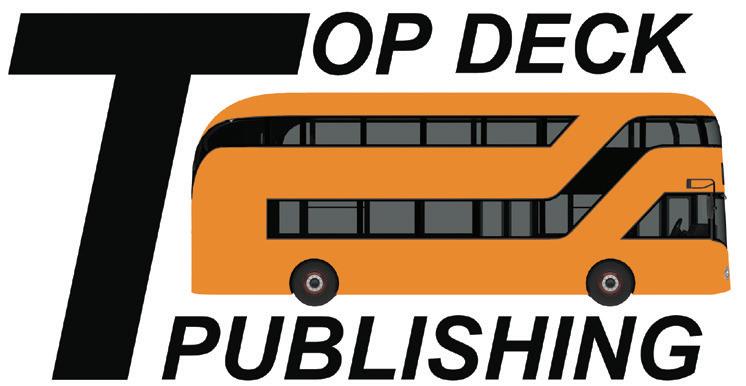London Trams and Trolleybuses

With additional information by Russell Fell


With additional information by Russell Fell
Most of the photographs within these pages were taken around 1950, some earlier, a few much earlier, some a little later. It was all a long time ago. Nearly all the vehicles depicted are long gone, although the preservationists have served London wonderfully well so a diverse group, a few rather illogically, although none the worse for that, survive. Much of the background has also changed vastly, although some of it hasn’t, and although fashion moves at a new Elizabethan, jet powered rate, it also goes round in circles. Nevertheless one can predict the date of any picture pretty accurately, certainly within a year or so, by observing what the passers by are wearing, especially the women.
More than half the vehicles depicted are either trams or trolleybuses. The last of the latter departed from the streets of London (by which we, of course, include the suburbs and beyond) in 1962, never to return, whilst the last tram headed for incineration at Charlton, close to the ground of the football team who twice around the same time reached the FA Cup Final, winning once, ten years earlier. Trams have returned, in a somewhat hesitant manner, in the Croydon area and, had London the foresight and courage of cities such as Birmingham and Manchester, would have spread much further; they may yet.
Had not the Second World War intervened, trolleybuses would have replaced all the trams, even by 1940 its fleet had become the largest in the world. After the war for various reasons London decided that diesel buses would replace not only the remaining trams but, eventually, the trolleybuses too.
Trams were seen as old fashioned, the cause of traffic congestion and both trams and trolleybuses by virtue of being tied to their electric supply, either from the conduit or overhead, ‘unsightly’ wire, were inflexible. Oil was still relatively cheap and, after all ‘we had our own,’ as it was asserted by successive governments, by virtue of the 51% share in the Anglo Iranian company which Britain had owned since 1908. Never mind that in the new, post-colonial world of the New Elizabethan era Iran would attempt to nationalise its oil in 1951, the company being renamed BP (British Petroleum) in 1954, and Britain would go to war in 1956 over the nationalisation of the Suez Canal in 1956, through which oil tankers sailed to the UK.
The motor bus fleet was in such a poor state of repair after the inevitable neglect of the war years, that London Transport’s priority was to first patch up and then get rid of much of it whilst the tougher, although also neglected tram fleet, could soldier on for a few more years. The first of the long promised post-war version of the AEC RT motor bus appeared in 1947 and production of it and its Leyland equivalent, the RTL and the RTW, grew so rapidly that by 1949 London was able to put 1592 new buses in service, more than the total number of the entire fleet of any other British bus company. It was now time to get rid of the trams and this was accomplished in the summer of 1952. Many regret their demise. And anyhow electricity is on its way back.
Michael H. C. Baker, March 2023

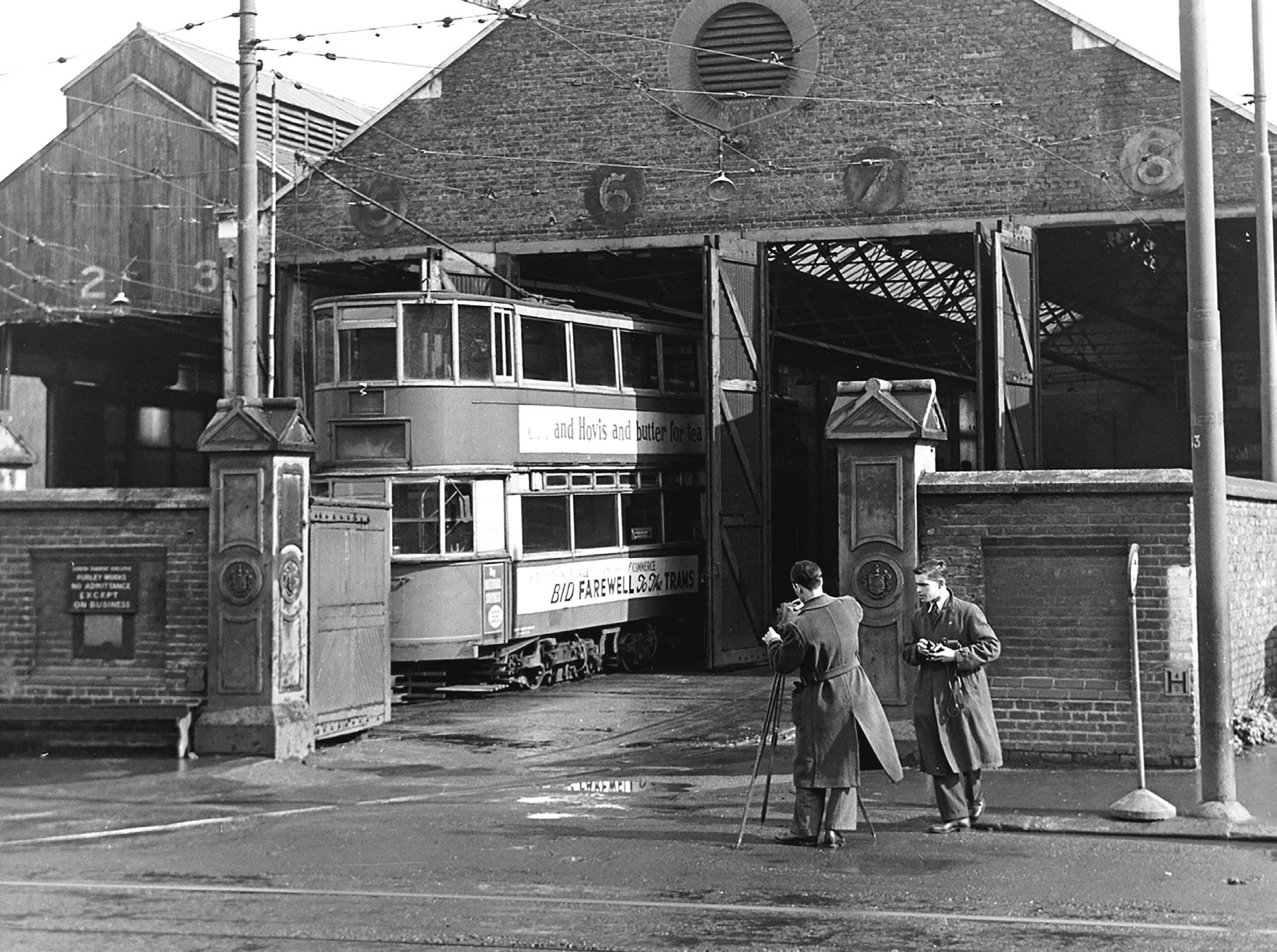
Opposite Bottom: To say the Feltham was generations ahead of any other tram to be found in London, or, indeed, elsewhere in the UK, is no understatement. Nowadays the tram is seen as the saviour of our cities, at least in Manchester, Birmingham and elsewhere and – of course – Croydon, to say nothing of abroad. But the revolutionary Felthams of 1929/30 came too late. The powers that be in charge of the London Passenger Transport Board had decided the tram had to go. The Feltham, typified by this one, No. 2136 outside Purley depot, almost at journey’s end, was big, bold and beautiful, it was fast, it was quiet, it was comfortable, drivers and the travelling public loved it. The author went to school on a Feltham often and even today, nearly 70 years since it last graced the streets of London and the southern suburbs, to visit the National Tram Museum at Crich and board No.331, the only working surviving Feltham, does not feel like a trip back in the past but one comfortably in the present.
Above: Purley Depot on the afternoon of 7th April, 1951. Photographers prepare to record rebuilt E1 No.839 which is being got ready to perform the rites as the last tram to work the Purley route. It had been hired for the occasion by the Croydon Chamber of Commerce.
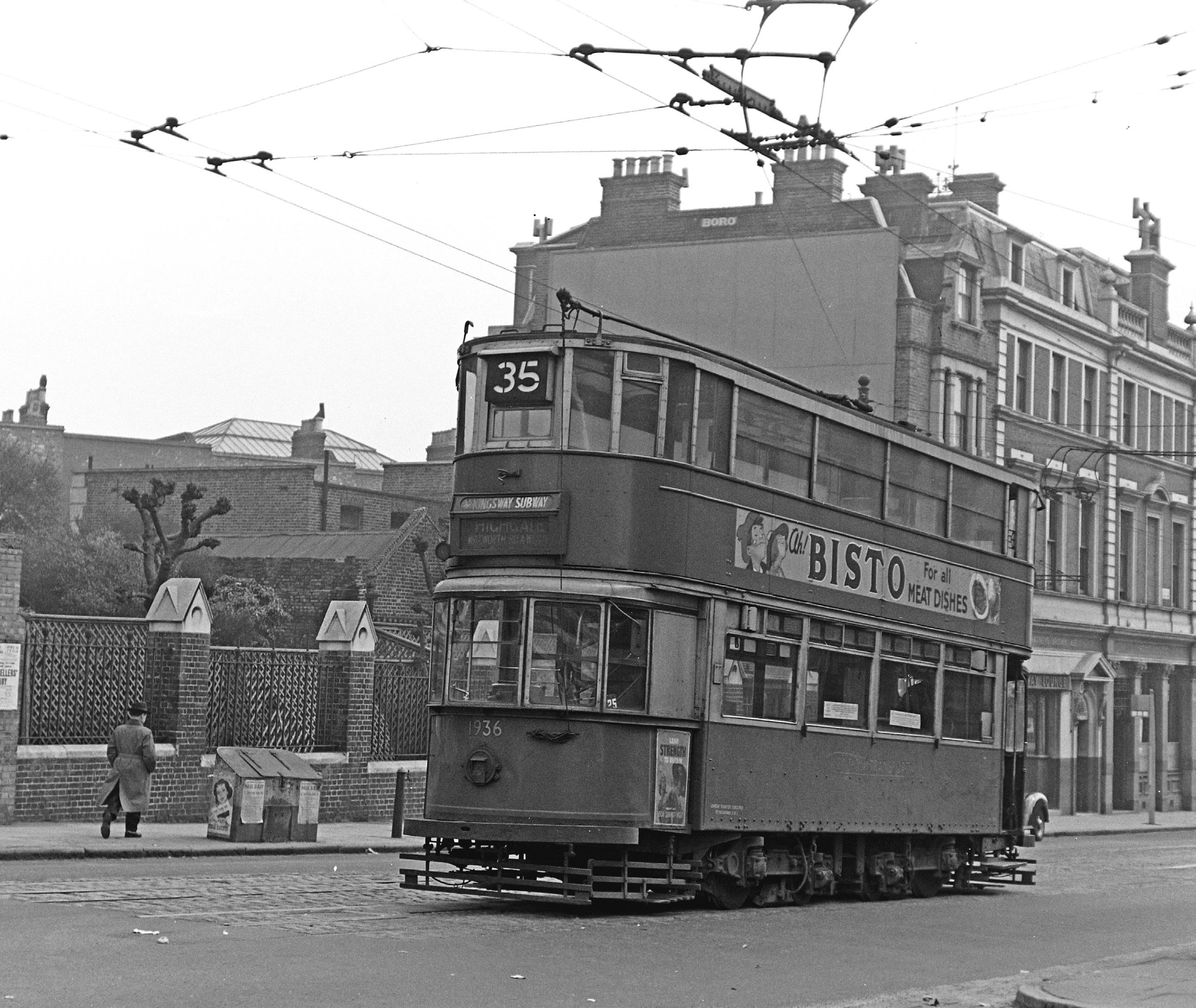
Opposite Top: E1 No.157 proceeding along the one way Upper Street, Islington on 28th December, 1951 with a passenger ready for a quick get away. The 86 minutes from Forest Hill to Archway was the longest start to finish journey possible on the tram network.
Opposite Bottom: Three E3 class trams, the rear one a long way off route 42, are in the centre of a very jolly time involving members of the Light Railways Transport League spreading all over the highway at Highgate on 5th April, 1952. The driver learning to handle the Morris saloon of about the same vintage as the trams must have been very surprised. A trolleybus is keeping well clear in the distance.
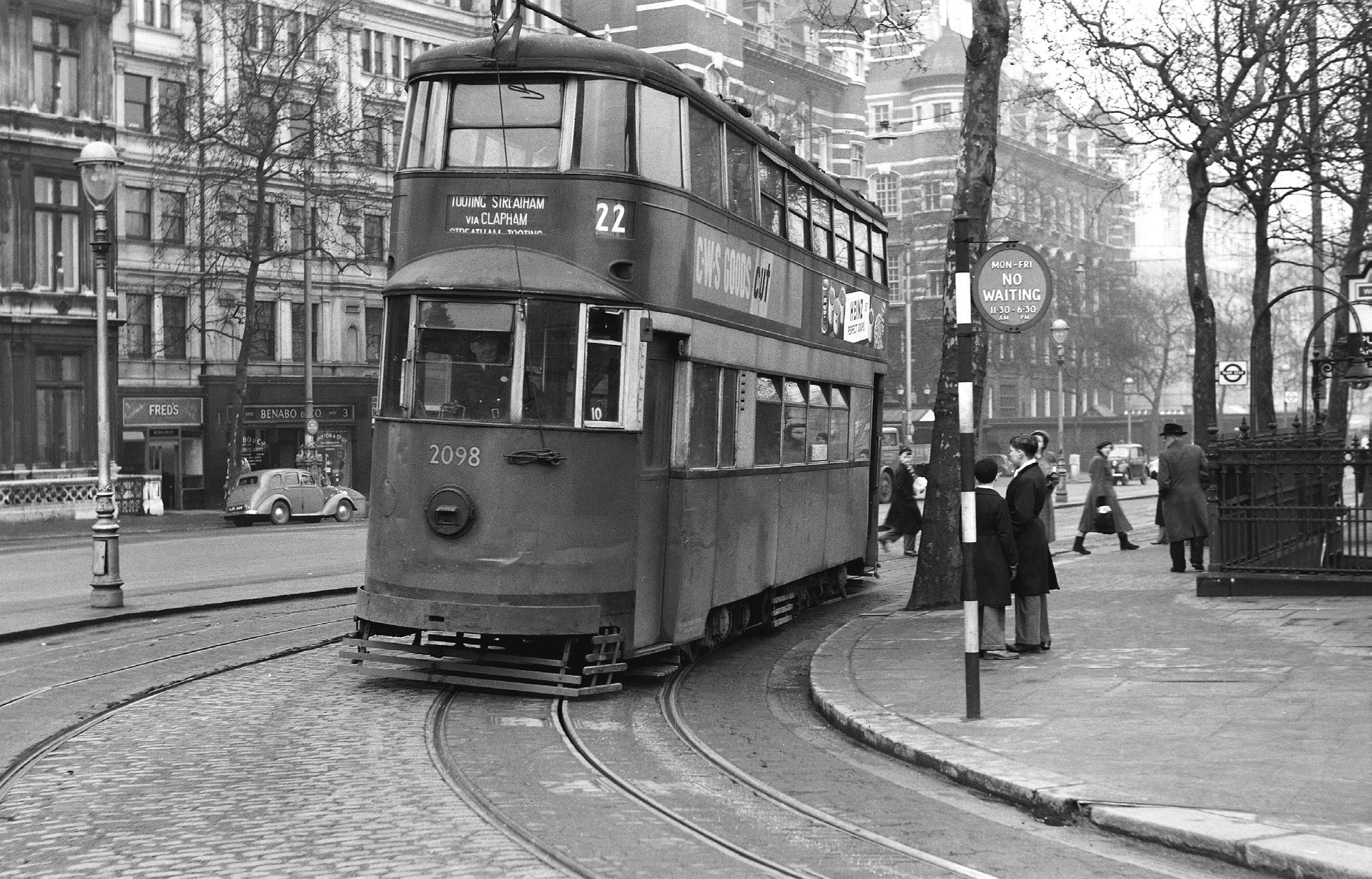
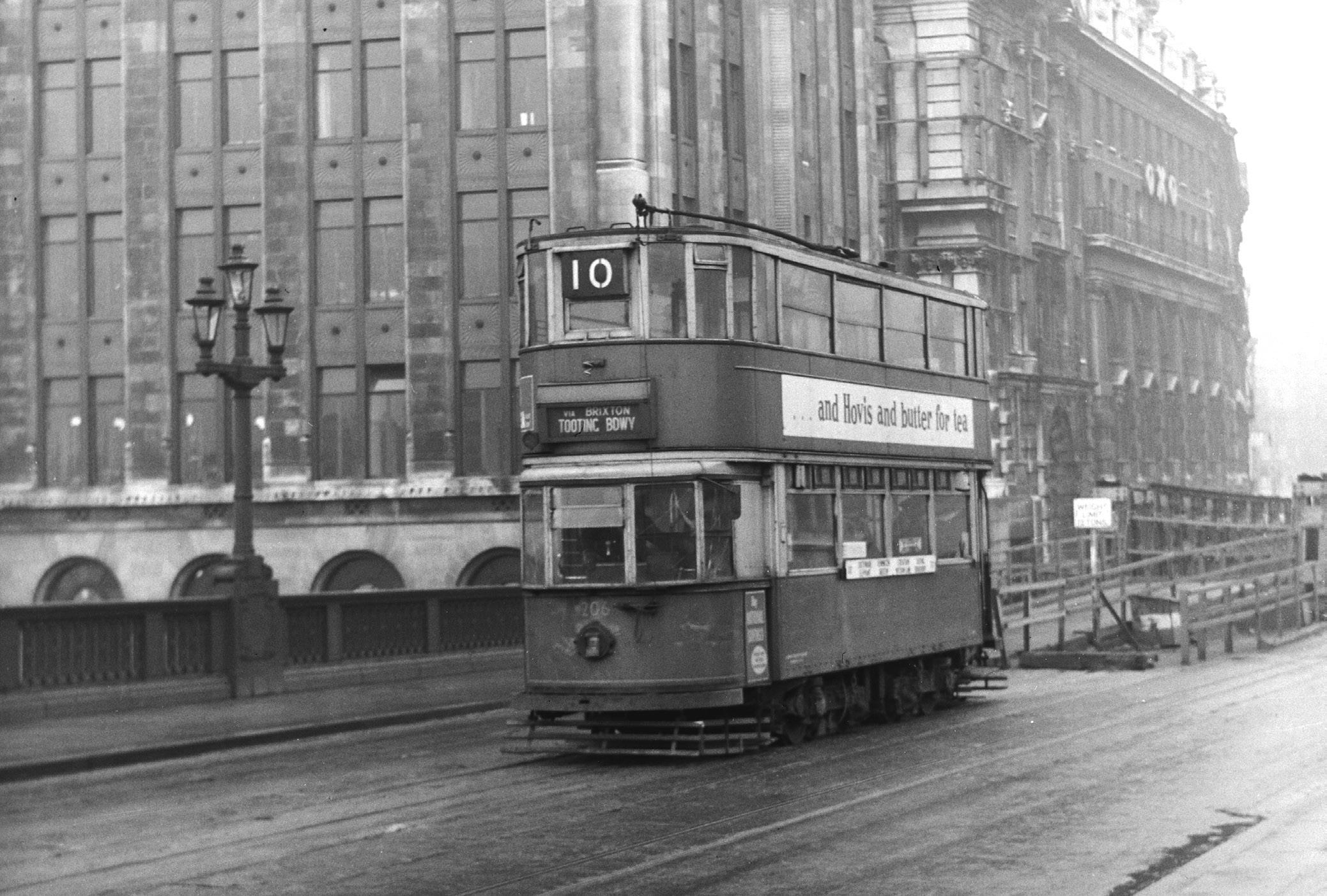


Top: Back on Westminster Bridge a southbound E1 No.1038 is passed by a northbound HR2 No.133 whilst a cyclist demonstrates the perils of the increasing traffic of all sorts in the post-war years for he is having to avoid both trams whilst at the same time keeping an eye out for the rest of the traffic also moving in both directions over the bridge. The tourists are still taking in the view, on the far right, beyond the bridge is County Hall, the headquarters of the London County Council. Surely if their transport department had not been swallowed up by London Transport in 1933, the tram would have remained a vital element on the London public transport scene until the present day.
Bottom: An HR2 stands at the Victoria terminus of route 58 in 1950 before setting off for Greenwich. The side view of this sturdy, if less than pristine vehicle, dating from 1930 would not have looked so very different to an Edwardian standing in the same spot 40 or years earlier. Modern touches are the flush, metal sides and windscreens protect the driver, but there are the same number of windows, boards still indicate the suburbs it will be serving, the number is a stencil, the platform upon which the driver and conductor carry out their duties are open to the elements, there is no provision for the former to sit down.
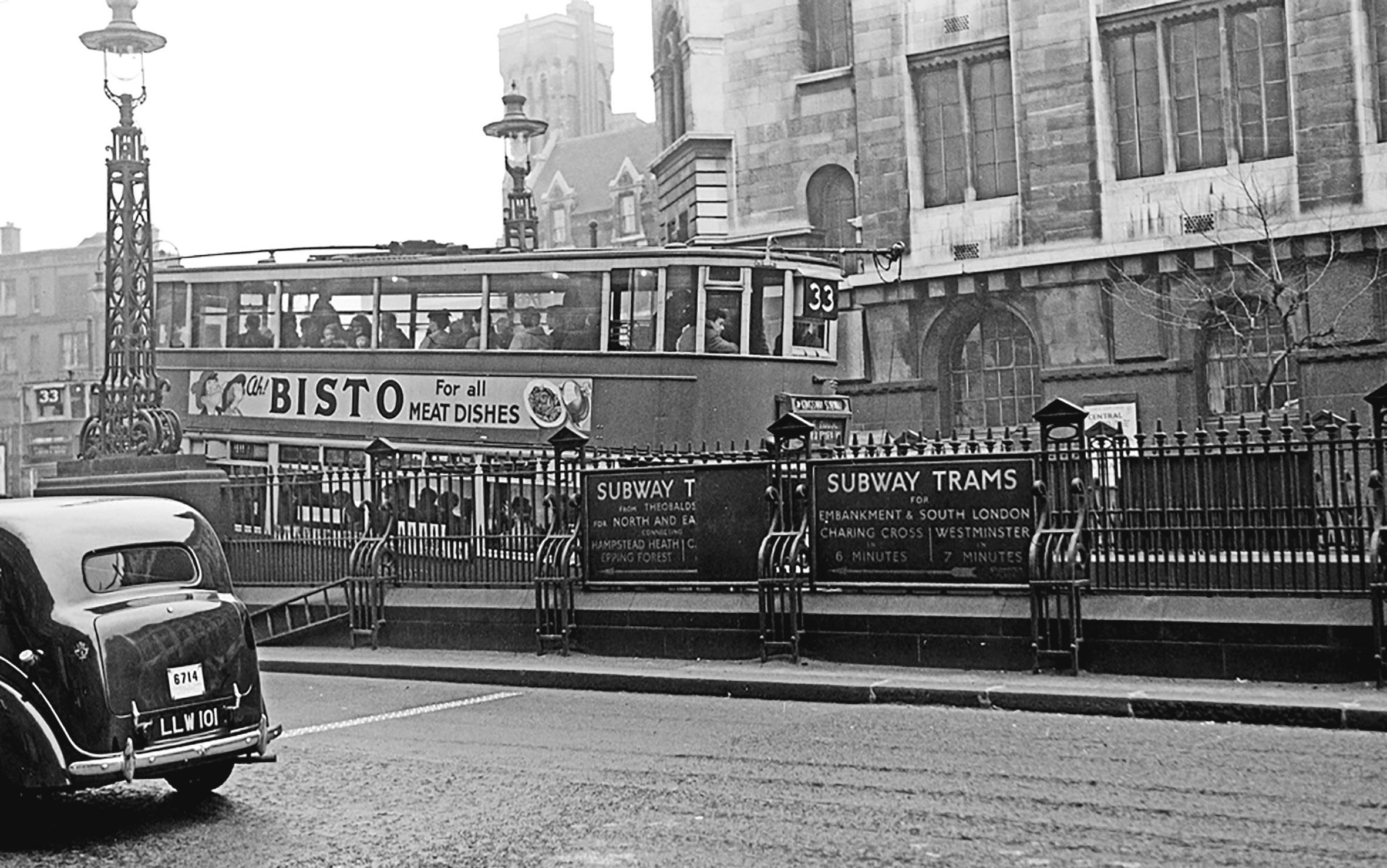
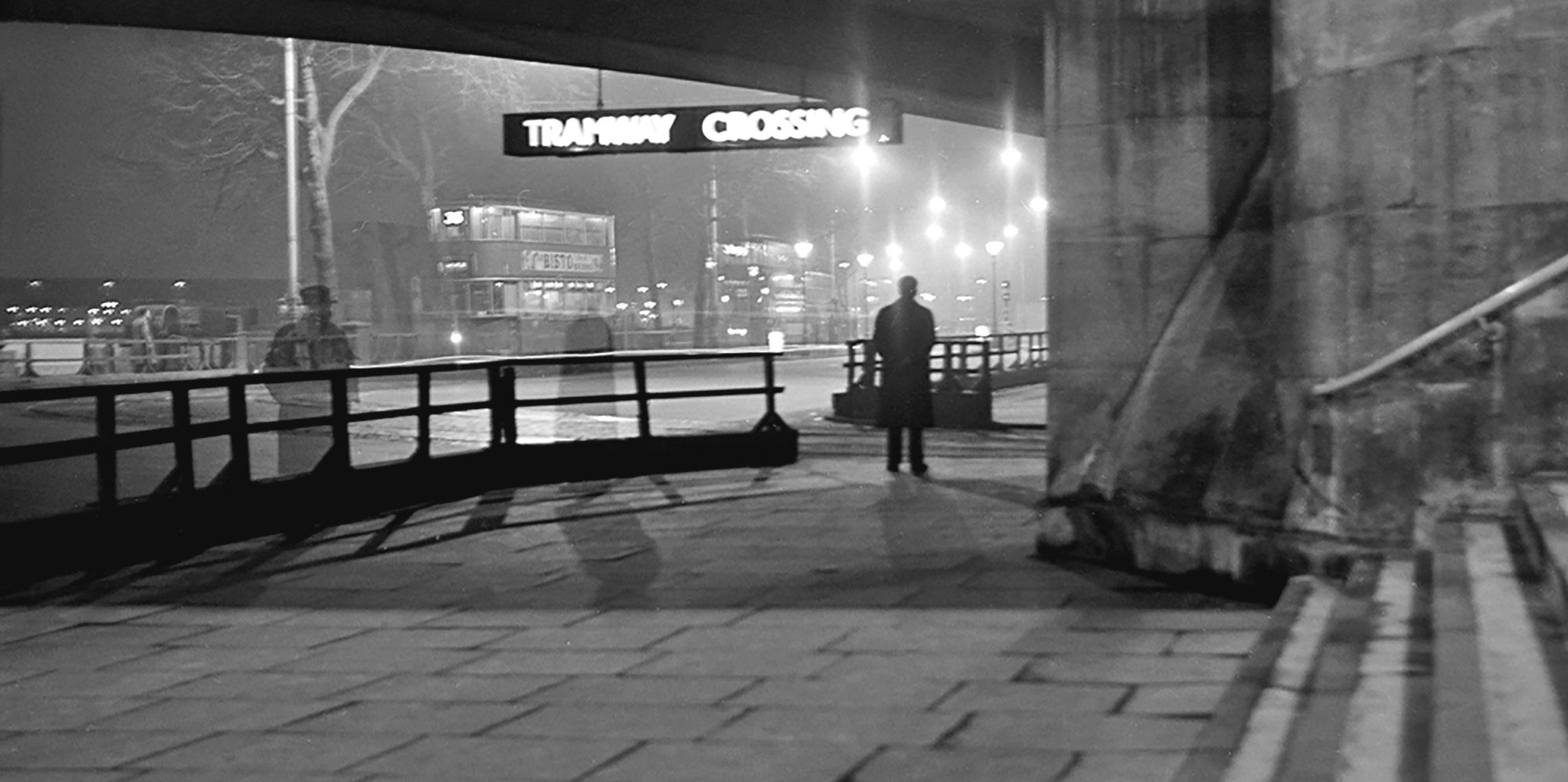 Top: A well filled 33 climbs out of Kingsway Subway, 5th April, 1952, whilst in the distance can be glimpsed a southbound tram in Theobalds Road. It was a long time since some of the destinations featured on the advert attached to the railings, for instance, Hampstead Heath and Epping Forest, could have been reached by tram.
Bottom: An evocative night scene at the southern entrance to Kingsway Subway. Two trams on the Embankment have stopped long enough for their image to be captured, somewhat faintly, in this time exposure photograph. Bus routes which replaced the subway trams used Kingsway and Southampton Row. The Embankment end of the tunnel was eventually converted into motor traffic use, much of the rest remains as it was after the last tram had passed through.
Top: A well filled 33 climbs out of Kingsway Subway, 5th April, 1952, whilst in the distance can be glimpsed a southbound tram in Theobalds Road. It was a long time since some of the destinations featured on the advert attached to the railings, for instance, Hampstead Heath and Epping Forest, could have been reached by tram.
Bottom: An evocative night scene at the southern entrance to Kingsway Subway. Two trams on the Embankment have stopped long enough for their image to be captured, somewhat faintly, in this time exposure photograph. Bus routes which replaced the subway trams used Kingsway and Southampton Row. The Embankment end of the tunnel was eventually converted into motor traffic use, much of the rest remains as it was after the last tram had passed through.
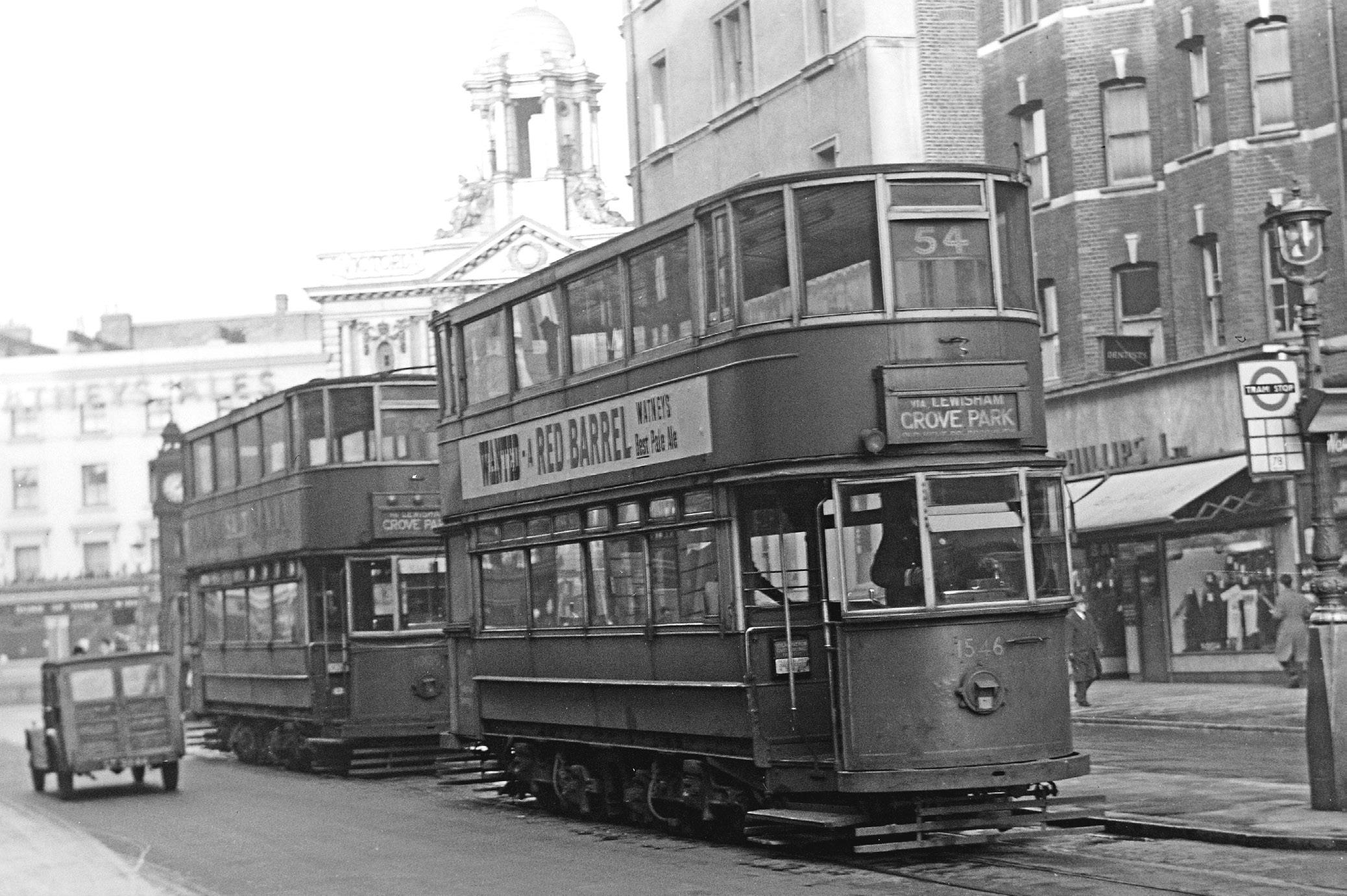

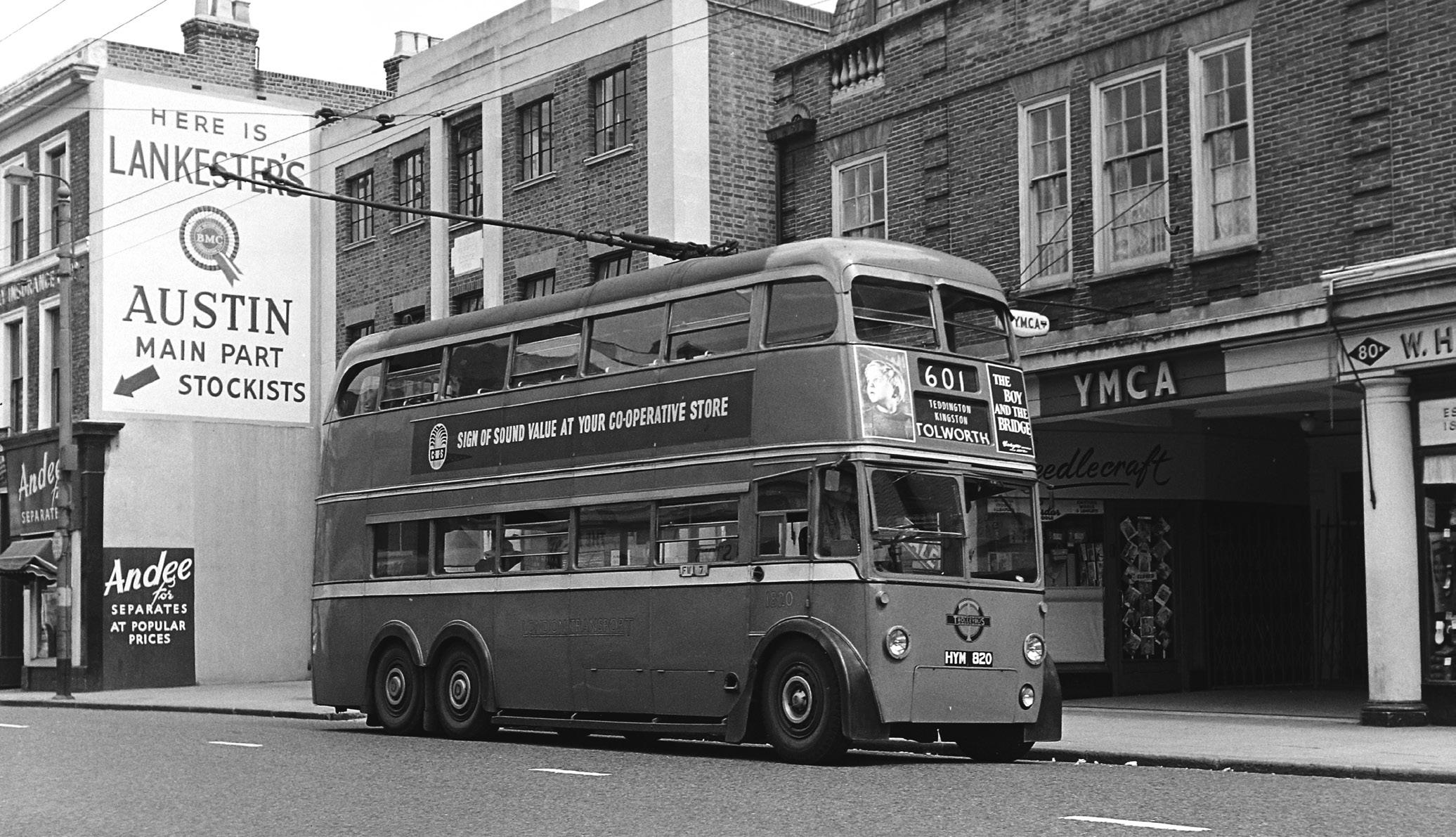
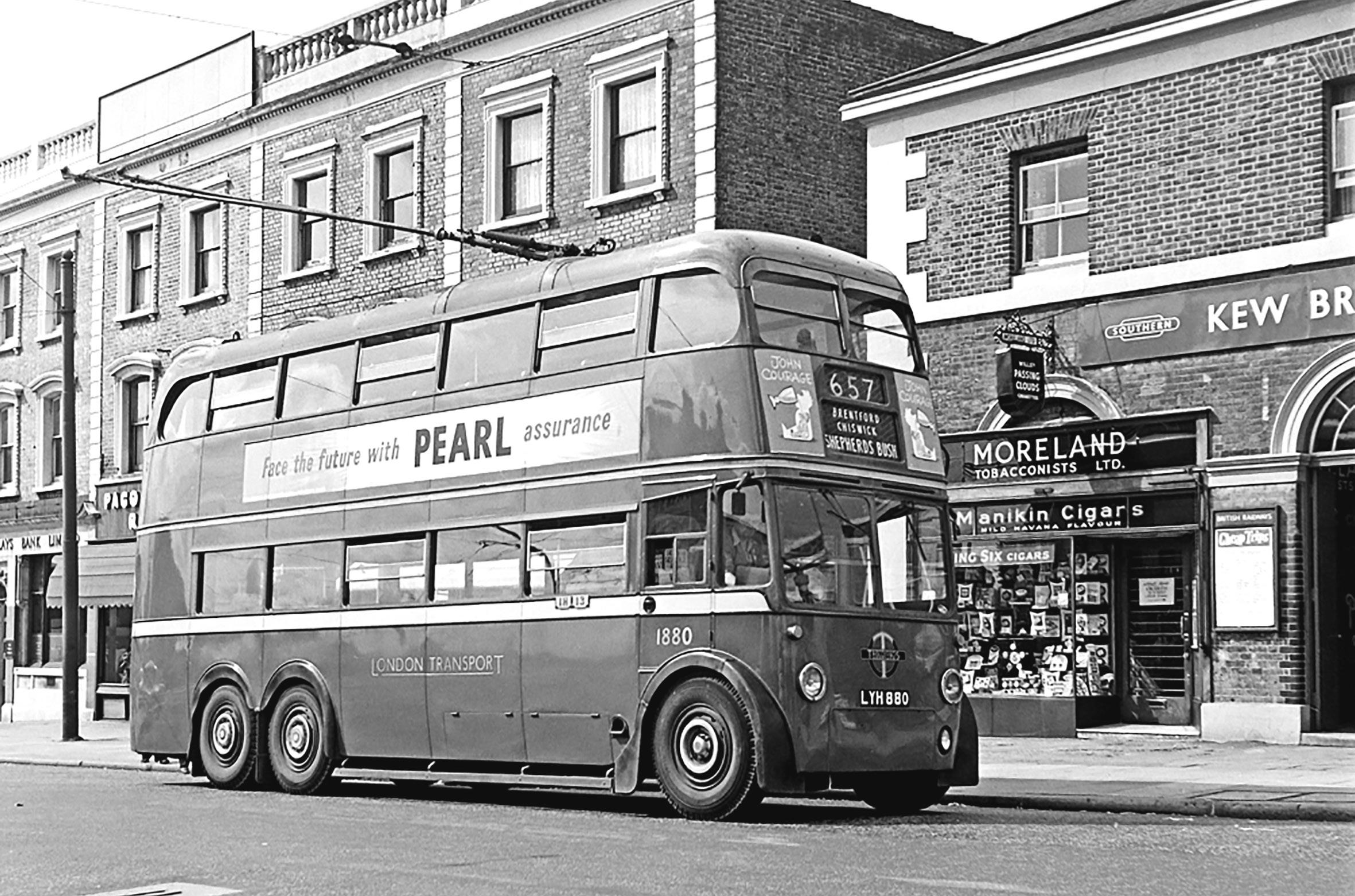 Above: The very last London trolleybuses were the final batch of LYH registered Q1s dating from 1852. No.1820 looks magnificent, posed beside the YMCA at Kingston on 3rd August, 1959 on its way to Tolworth. There is still a YMCA in the town moved some time ago to beside the river.
Above: The very last London trolleybuses were the final batch of LYH registered Q1s dating from 1852. No.1820 looks magnificent, posed beside the YMCA at Kingston on 3rd August, 1959 on its way to Tolworth. There is still a YMCA in the town moved some time ago to beside the river.
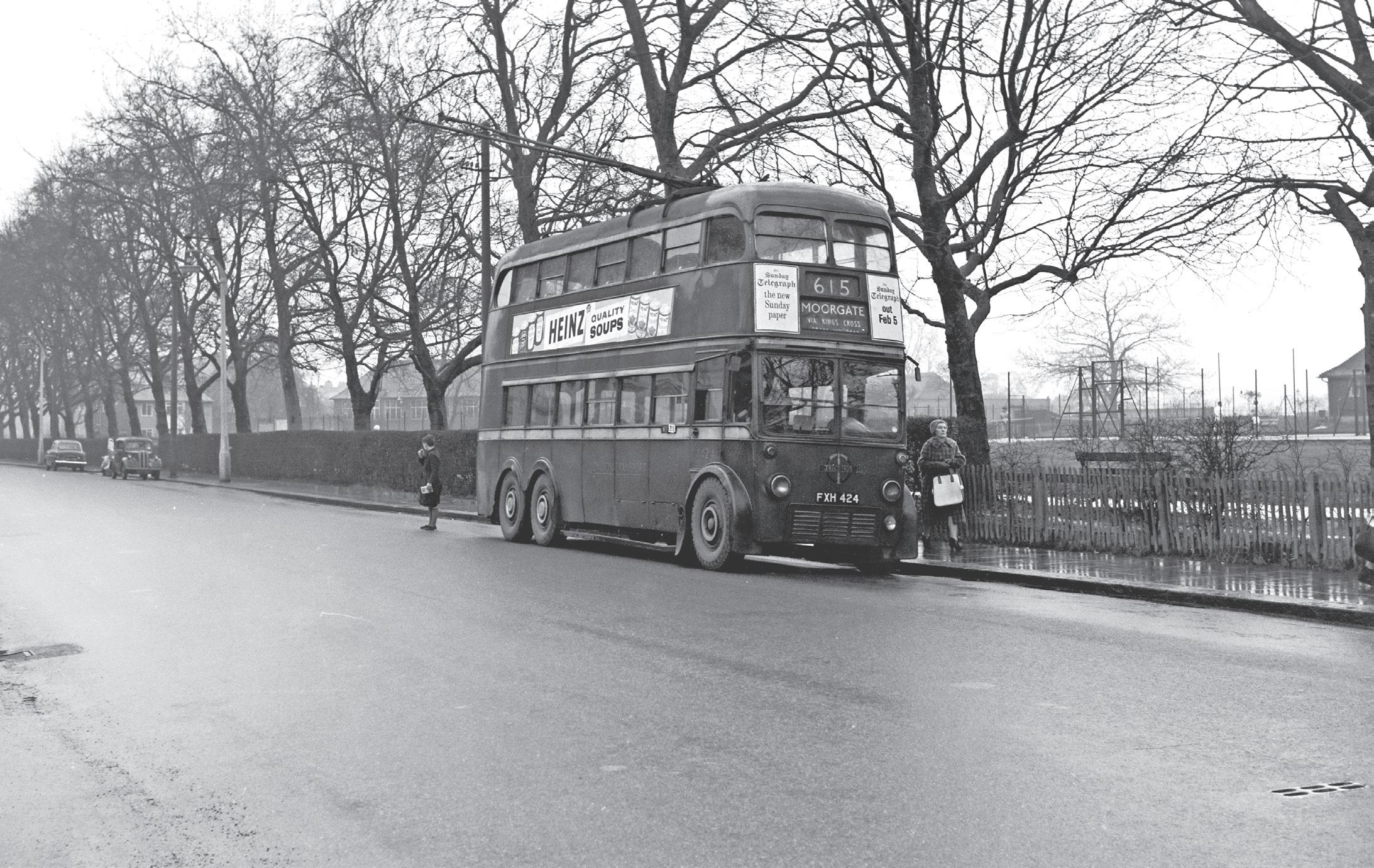
The Transport Treasury contains a vast archive of photos of rail and road vehicles, images of which are available to the public. The images in this publication all come from this archive, and they revive for us a bygone age in London. They also remind us how different London was but a relatively short time ago. Had it not been for the Second World War the trams would have disappeared from the streets of London a decade earlier. London Transport Passenger Board, set up in 1933, had made an early decision to replace its extensive tram network with trolleybuses prior to war breaking out in 1939. After the war London Transport saw no long-term future for the trolleybuses either. The relative cheapness of oil trumped clearly trumped the environmental benefits of electric traction.
ISBN 978-1-913893-43-9

